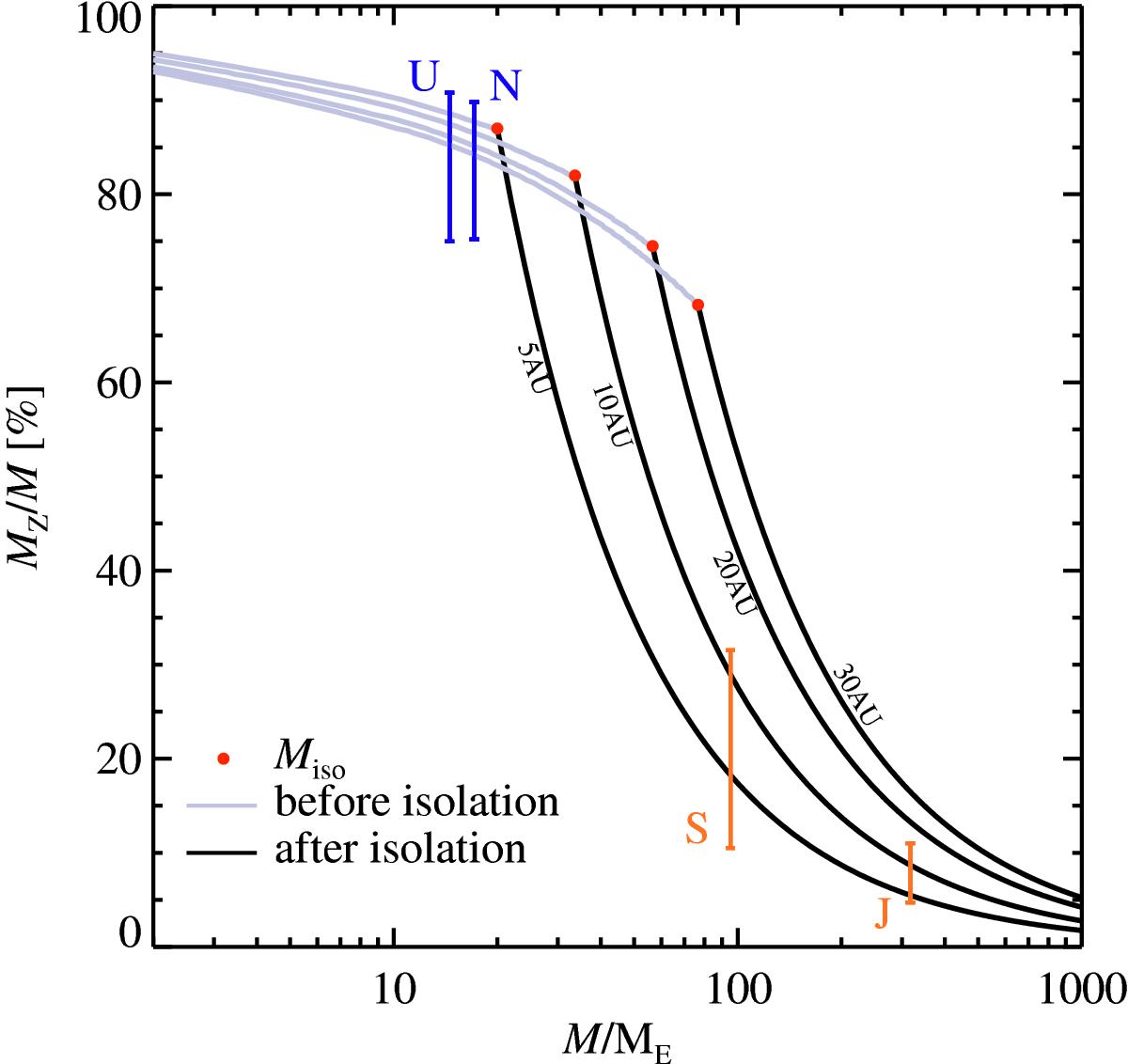Fig. 4

Total heavy element mass fraction as a function of the total mass M of the giant planet, at different orbital radii (5, 10, 20, 30 AU). Planets that do not grow beyond the pebble isolation mass (red dots) remain core-dominated, while those that grow larger will have most of their mass in gas. Estimates of the composition of Uranus and Neptune (blue error bars, Helled et al. 2011) agree well with the prediction made in this paper for planets formed in the outer disc. Similarly, for the gas-giant planets Jupiter and Saturn we find a good agreement between the 5−10 AU curves and the total heavy element mass estimated by Guillot (2005), indicated by the orange error bars. In order to create this figure, we numerically calculated the composition of the planet when it becomes critical, taking into account the pollution of the envelope, for planet masses below the pebble isolation mass (light blue curves). When the planet reached a mass larger than the pebble isolation mass, only nebular gas was added to continue growth (black curves). Here we present results with refractory fraction β = 0.5, but results depend weakly on the choice of β between 0.1−1.
Current usage metrics show cumulative count of Article Views (full-text article views including HTML views, PDF and ePub downloads, according to the available data) and Abstracts Views on Vision4Press platform.
Data correspond to usage on the plateform after 2015. The current usage metrics is available 48-96 hours after online publication and is updated daily on week days.
Initial download of the metrics may take a while.


